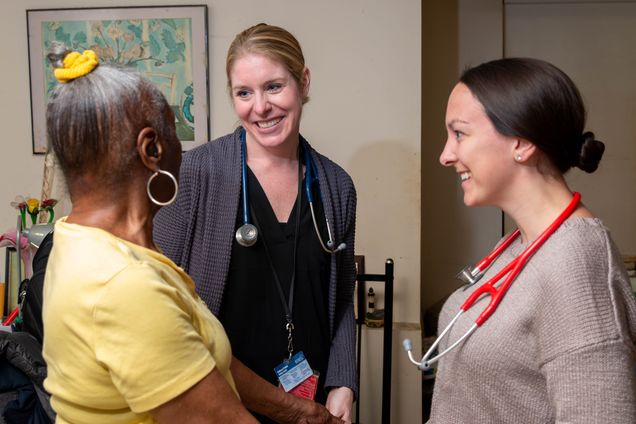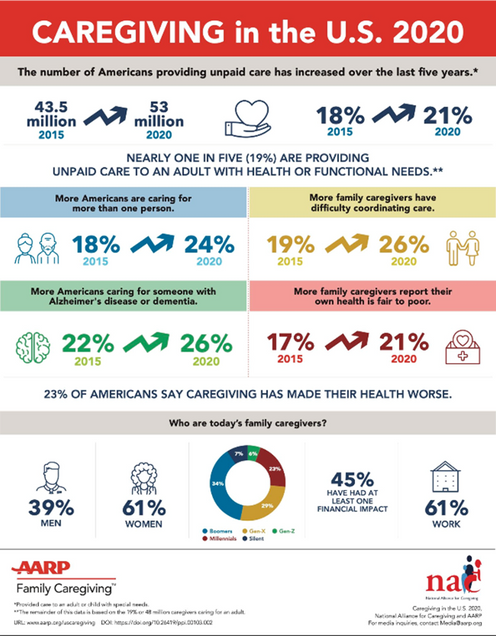November was Caregiver Appreciation Month

A “typical” high intensity caregiver cares for someone over the age of 67 with multiple conditions and has been hospitalized at least once in the last year. This is the type of caregiver we see in our Geriatrics Home Care program, which provides in-home Primary Care for patients who are homebound and over 70 years old. We serve over 500 patients in the Boston area.
Our Nursing Home Medical Director, Dr. Rossana Lau-Ng oversees our Nursing Home program. During the pandemic our BMC Nursing Home MDs and NPs became the surrogate family for their patients who were unable to see their own families. Below she offers a shout out to our colleagues in the Nursing Homes we work with:
“I have seen nursing home staff be that surrogate family for many lonely nursing home residents during this time. Despite COVID restrictions, they continue to engage and care for nursing home residents. I have seen pumpkin carving competitions, therapy farm animals visiting that bring smiles all around, and staff working with families to do outdoor visits or video chats as often as possible.”
Caregiver Data for 2020

Our caregivers spend on average 48.9 hours/week helping with 3 Activities of Daily Living (ADLs) such as bathing, dressing, toileting, feeding, 5.5 Instrumental Activities of Daily Living (IADLS) such as shopping, laundry, cleaning, and medical/nursing tasks. In addition, about 56% of high intensity caregivers are employed and work about 35 hours/week (AARP Caregiving in the US, 2020; The “Typical” High Intensity Caregiver, 2020)
Tips for Managing Caregiver Stress
Symptoms to lookout for in relation to stress are: Anger/fustration towards the person you’re caring for, social withdrawal from friends and activities, anxiety, depression, exhaustion, irritability, sleeplessness, difficulty concentrating and/or health problems.
Ways to manage your stress are:
- Know the resources available
- Ask for help from friends or family members if you need a break!
- Get help, talk to your doctor or therapist
- Use relaxation techniques
- Meditation
- Breathing Exercises
- Get moving! Just 10 minutes of exercise a day can help. Find an activity you live like walking or gardening
- Take care of yourself through regular doctors visits, eating well and exercising (Alzheimer’s Associate: Be a Healthy Caregiver)
How COVID-19 is Affecting Family Caregivers
The following are key highlights from the findings and implications for policy:
- Family caregivers reported more negative effects from the pandemic than noncaregivers. They were more likely to report taking precautions and worries about getting themselves or the care recipient sick. They were also more likely than noncaregivers to be experiencing social isolation, anxiety and depression, fatigue, sleep disturbance, financial hardship and food insecurity.
- Family caregivers report that the pandemic has increased their caregiving responsibilities, and that providing care is more emotionally, physically, and financially difficult. This was largely due to interrupted access to care [both for themselves and their care recipient(s)], and the resulting lifestyle adjustments have led to the reported increases in worries, fear, depression, and anxiety.
- Female caregivers, minority caregivers, caregivers with less education, caregivers with lower income, younger caregivers, caregivers who care for persons with mental health/behavioral issues, and caregivers who live with the care recipient tended to report greater negative impacts of the pandemic.
- During this public health crisis, family caregivers should receive increased support and assistance, and be specifically targeted in policy discussions and intervention/ program planning.